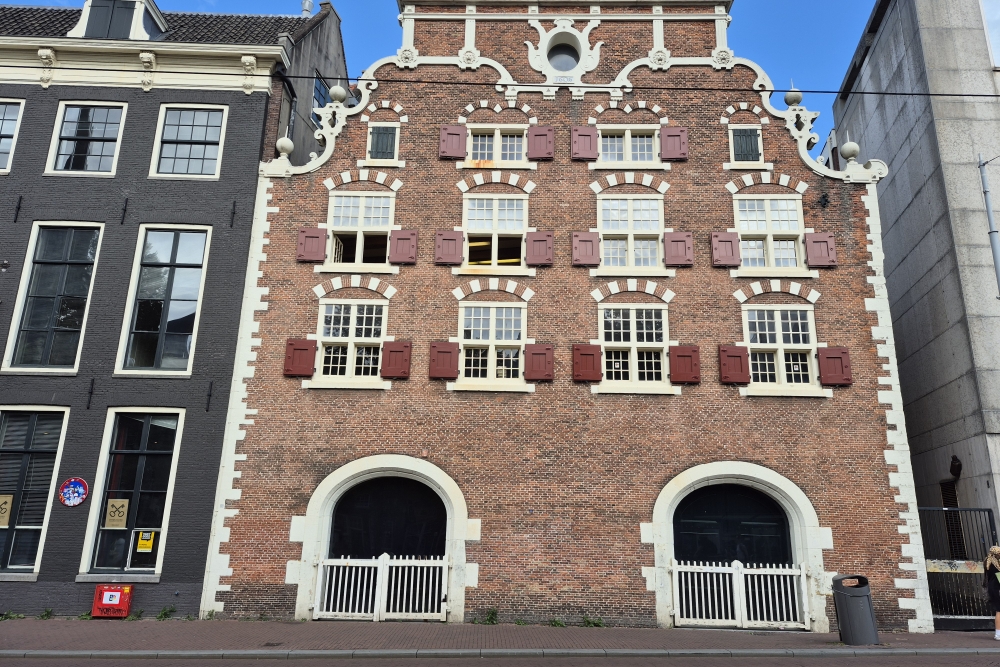Stelling van Amsterdam - Militia Building (Bushuis)
The Bushuis in Amsterdam was built around 1550 as an arsenal for the city militia, intended for storing weapons and ammunition. During the construction of the new city walls from 1609 onwards, the building assumed a central role in the city's military infrastructure. A similar arsenal from that period stands on Waterlooplein. During the reigns of Louis Napoleon and King William I, the Bushuis served as a stable for the royal family's court carriages and horses.
From the early seventeenth century, the Bushuis also played a significant role in the rise of the Dutch East India Company (VOC). In 1603, the newly established VOC rented part of the building to store goods, and from 1605 onwards, it occupied the entire building. The Bushuis even served as a slaughterhouse for the VOC, processing thousands of oxen annually as provisions for the long sea voyages. In 1606, the adjacent East India House was added, the first building specifically designed for the Dutch East India Company (VOC). Until the end of the eighteenth century, the Bushuis served as the headquarters of the Amsterdam VOC Chamber and the central government, the Heren XVII. After the VOC's bankruptcy in 1799, the building was used by the colonial government until 1808.
Later, the building was repurposed as the Militia House, where conscripts from Amsterdam had to report for duty, apply for military service, and apply for exemptions.
During the First World War, families of mobilized soldiers could apply for a breadwinner's allowance here. The original Bushuis was demolished around 1890, but the current neo-Gothic building on the same site now houses the Faculty of Humanities of the University of Amsterdam. The entrance is located on Handboogstraat.
Do you have more information about this location? Inform us!
Source
- Text: TracesofWar
- Photos: Rick Hoogervorst
- stelling-amsterdam.nl
Nearby
Museum
- NIOD Institute for War, Holocaust and Genocide Studies - Amsterdam
- Anne Frank House Amsterdam - Amsterdam
- Jewish Museum - Amsterdam
Point of interest
- Office Voluntary Landstorm Amsterdam - Amsterdam
- Luftwaffe Office Herengracht - Amsterdam
- Garage "J.B.Wijs" - Amsterdam
Monument
- War Memorial Singel Church - Amsterdam
- Memorial Maison De Bonneterie Amsterdam - Amsterdam
- Memorial Nieuwezijds Voorburgwal 282 - Amsterdam
Cemetery
- De Nieuwe Kerk - Amsterdam
- Dutch War Graves Cemetery Vredenhof Amsterdam - Amsterdam
- Dutch War Graves Roman Catholic Cemetery St. Barbara Amsterdam - Amsterdam
Remembrance Stone
- Stumbling Stones Kalverstraat 192 - Amsterdam
- Stumbling Stones Herengracht 411 - Amsterdam
- Stumbling Stone Herengracht 459 - Amsterdam
Fortification
- Stelling van Amsterdam - Willem III-sluis - Amsterdam
- Stelling van Amsterdam - Willem I-sluis - Amsterdam
- Stelling van Amsterdam - Schut Lock Haarlemmertrekvaart - Amsterdam




